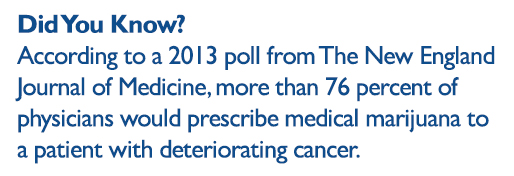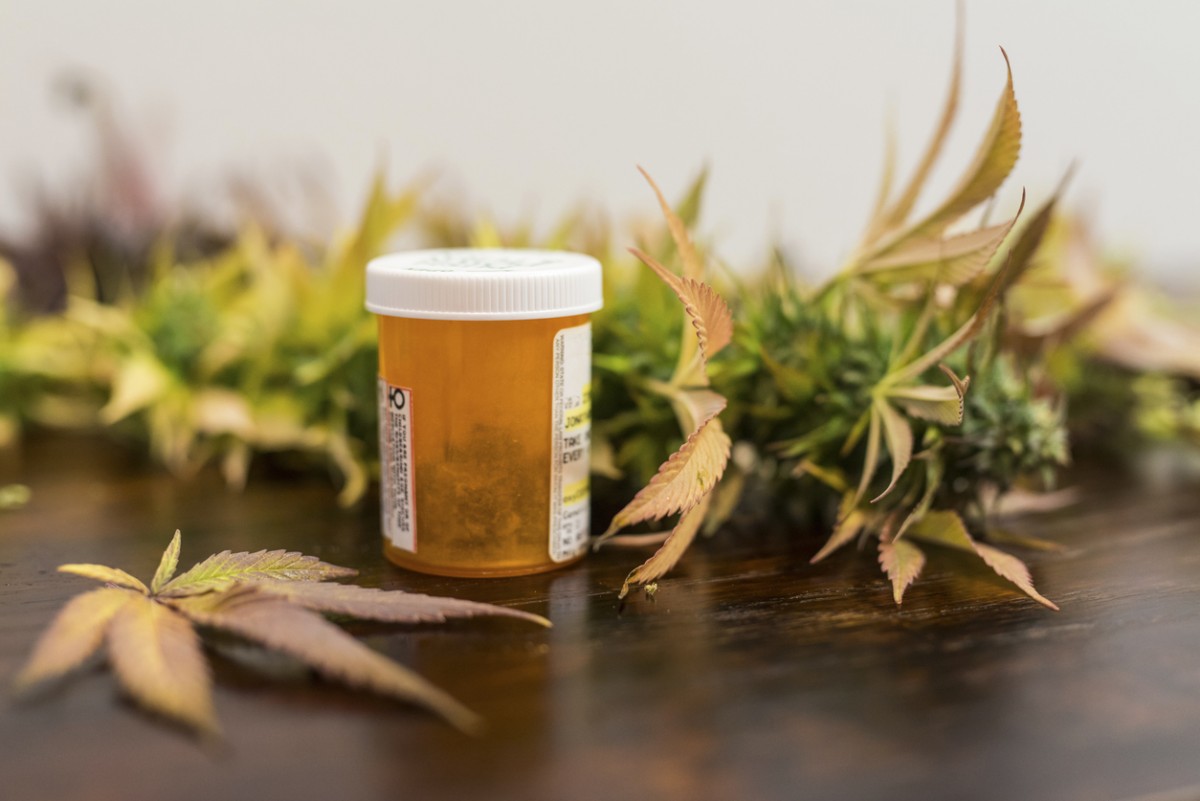Medical marijuana, for years a controversial pipe dream throughout the United States, is embroiled in an entirely new debate in 2017. For decades, the discussion over legalized marijuana usage has centered on ethics and morality, conflicting desires between freedom and protection. These arguments are still robust today, but the terms have shifted — from medical usage to complete recreational legalization. In the medical community, the science is well-accepted; marijuana has a variety of ameliorative benefits in health and disease. Now, our discussion revolves around how to best embrace this newly utilizable medicine, including developing research standards and training new and old doctors how to diagnose and prescribe medical marijuana in a manner that best helps their patients.
In 1996, California was the first state to pass a functional (nonsymbolic) bill allowing medical marijuana to be prescribed by doctors and utilized by patients for a variety of conditions, including glaucoma (reduces ocular inflammation), cancer (reduces chemotherapy side effects, such as nausea) and chronic pain. Four more states followed suit before the turn of the century, and in 2017, 28 states and the District of Columbia allow medical marijuana to be prescribed for a variety of conditions. In these states, an estimated 2.5 million patients have prescriptions, but statistics on who these prescriptions are coming from are hard to suss out. This opacity highlights the new challenge throughout the United States: how to train and regulate providers in this growing field of medicine.
According to a 2013 poll from The New England Journal of Medicine, more than 76 percent of physicians would prescribe medical marijuana to a patient with deteriorating cancer. The doctors cited the demonstrable effects of cannabis use on nausea, pain amelioration and appetite promotion. They also compared the deleterious effects of marijuana to those of other FDA-approved drugs currently prescribed to treat similar conditions and overwhelmingly found the former less damaging than the latter. These medical opinions are based on evidence from scientific research. More than 60 peer-reviewed papers have examined marijuana’s medical effect on a number of conditions — including Parkinson’s disease, multiple sclerosis and HIV/AIDS — 60 percent of which reported positive effects of the drug, compared to only 5 percent reporting negative effects.
 Regardless, marijuana remains Schedule I at the federal level, a classification that specifically defines the substance as having “no medicinal value.” This creates a conflict for doctors and health care systems throughout the country. Physicians risk their federal license by prescribing medical marijuana, and large hospital networks, such as Johns Hopkins, have largely remained uncommitted on the issue. Johns Hopkins is simultaneously conducting research into medical marijuana’s health benefits, as well as commissioning a team of doctors and administrators to explore the risks and rewards of incorporating the growing new field into its health system. Most importantly, this incorporation would require training physicians, both new and old, in prescribing a drug for years vilified in the United States. The sweeping acceptance of medical marijuana is unlikely to reverse directions, and we are poised to see significant changes in the medical community regarding this drug in the very near future.
Regardless, marijuana remains Schedule I at the federal level, a classification that specifically defines the substance as having “no medicinal value.” This creates a conflict for doctors and health care systems throughout the country. Physicians risk their federal license by prescribing medical marijuana, and large hospital networks, such as Johns Hopkins, have largely remained uncommitted on the issue. Johns Hopkins is simultaneously conducting research into medical marijuana’s health benefits, as well as commissioning a team of doctors and administrators to explore the risks and rewards of incorporating the growing new field into its health system. Most importantly, this incorporation would require training physicians, both new and old, in prescribing a drug for years vilified in the United States. The sweeping acceptance of medical marijuana is unlikely to reverse directions, and we are poised to see significant changes in the medical community regarding this drug in the very near future.
Related Content
- Medical Marijuana 'Edibles' Mostly Mislabeled, Study Shows
- Natural Relief for Depression
In Johns Hopkins research, meditation appeared to provide relief from anxiety and depression symptoms. Find out how simple it can be to add the technique to your everyday life.
